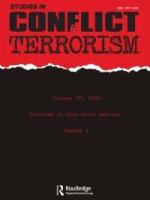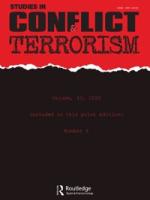Transnational jihad as a bundled conflict-constellation
In a special issue of Studies in Conflict and Terrorism, edited by Mona Kanwal Sheikh, different conflict zones are examined in order to examine processes of transnationalization and the interlinkages between local and global jihadist movements.
In her introductory article Sheikh argues that recent conflicts in Syria, Iraq, Afghanistan, Yemen and the Sahel, where jihadist actors have been involved, have displayed an uncommon degree of conflict complexity. An example of this sort of complexity is how, in Syria, the manifestation of the Arab Spring in the shape of protests against an authoritarian regime in 2011 quickly turned into a stage for regional rivalry; engendered myriad different, non-state, actors; escalated into a full-blown civil war; and drew in international military interference. Conflict resolution thinking is challenged by this ground-level reality, not only because of the multiple actor-types engaging, but also by non-material aspects driving these conflicts such as ideology, religion, emotion, and transnational communication. Sheikh’s introductory article establishes an analytical framework that can enhance an understanding of macro-level conflict constellations such as jihadist conflicts.
The issue includes contributions that highlight the significance of various dimensions of transnationalization. Dino Krause focuses on South Asia and zooms in on the aspect of transnationalization that has to do with the integration processes between local movements and transnational jihadist organisations.
Maria-Louise Clausen looks at transnationalization in a Yemeni context and finds it to be in large part a rational, ‘franchising’, decision taken not by the leadership organisation, but often initiated by the local affiliate organisations.
Isak Svensson and Desirée Nilsson explain transnationalization as a process where pre-existing identity cleavages are reproduced through the mobilisation of transnational jihadist groups. Their quantitative study demonstrates that, on a global scale, they most commonly mobilise on ethnic grounds.
Jerome Drevon and Patrick Haenni dive into the case of Syria, and describe why Jabhat an-Nusra ‘de-transnationalized’ into the more locally-oriented HTS. Like Clausen, they stress strategic interests and rationality from the perspective of the local affiliate.
Signe Marie Cold-Ravnkilde and Boubacar Ba investigate the significance of ideology in order to explain the expansion of jihadist groups in the Sahel. They show how different jihadist groups in Mali compete to mobilise new followers, thereby representing contesting models of jihadist governance. From this perspective, transnationalization is an effect of increased competition.
Amira Jadoon examines operational behaviour as one aspect of transnationalization. The focus is on how alliance with a global jihadist movement affects the military operations of local militant groups on the ground. This is done through a study of the alliance between the Islamic State’s official affiliate in Afghanistan and Pakistan and two jihadist groups in Pakistan.
DIIS Eksperter



